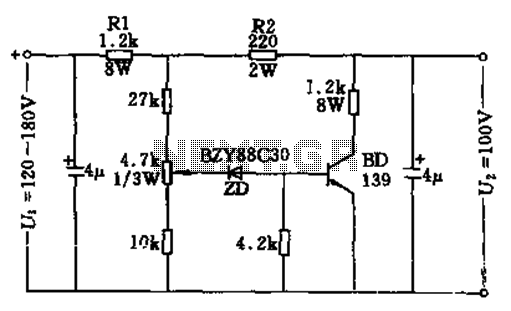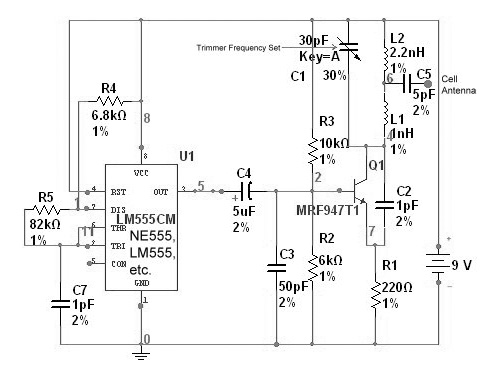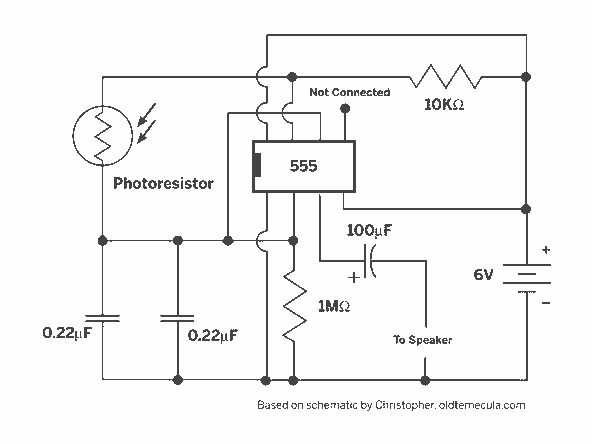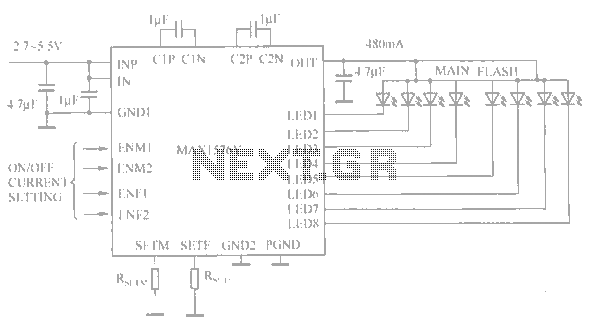
IC Controlled Emergency Light With Charger Circuit
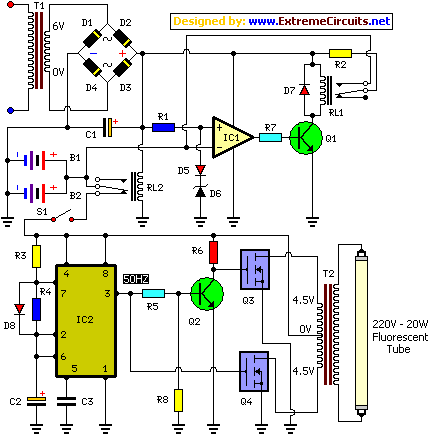
This document presents the circuit diagram of an IC-controlled emergency light with a charger, which functions as a 12V to 220V AC inverter circuit. The primary features of this circuit include automatic activation of the light during mains failure and a battery charger equipped with over-charge protection. In the absence of mains power, relay RL2 remains in a de-energized state, allowing the battery supply to power the inverter section through its normally closed (N/C) contacts and switch S1.
The IC-controlled emergency light circuit operates by utilizing a relay, an inverter, and a battery management system. The core of the circuit is an integrated circuit (IC) that monitors the mains voltage. When the mains supply is interrupted, the IC triggers relay RL2, which then connects the battery to the inverter circuit. The inverter converts the 12V DC from the battery into 220V AC, which is suitable for powering standard household appliances.
The circuit includes a battery charger that maintains the battery's charge when mains power is available. This charger is designed with over-charge protection to prevent damage to the battery. It typically incorporates a voltage regulator and a current limiting circuit to ensure the battery is charged safely and efficiently.
The switch S1 is used to manually control the operation of the inverter, allowing for user intervention if necessary. The normally closed contacts of relay RL2 ensure that, in the event of a power failure, the battery is automatically connected to the inverter without requiring manual operation.
In summary, this circuit diagram illustrates a reliable emergency lighting solution that autonomously activates during power outages while simultaneously ensuring the battery is kept charged and protected from overcharging. This design is suitable for various applications, including residential, commercial, and industrial environments, where uninterrupted power supply is critical.Here is the circuit diagram of IC Controlled Emergancy Light With Charger or simply 12V to 220V AC inverter circuit. The circuit shown here is that of the IC controlled emergency light. Its main features are: automatic switching-on of the light on mains failure and battery charger with over-charge protection.
When mains is absent, relay RL2 is in de-energized state, feeding battery supply to inverter section via its N/C contacts and switch S1.. 🔗 External reference
The IC-controlled emergency light circuit operates by utilizing a relay, an inverter, and a battery management system. The core of the circuit is an integrated circuit (IC) that monitors the mains voltage. When the mains supply is interrupted, the IC triggers relay RL2, which then connects the battery to the inverter circuit. The inverter converts the 12V DC from the battery into 220V AC, which is suitable for powering standard household appliances.
The circuit includes a battery charger that maintains the battery's charge when mains power is available. This charger is designed with over-charge protection to prevent damage to the battery. It typically incorporates a voltage regulator and a current limiting circuit to ensure the battery is charged safely and efficiently.
The switch S1 is used to manually control the operation of the inverter, allowing for user intervention if necessary. The normally closed contacts of relay RL2 ensure that, in the event of a power failure, the battery is automatically connected to the inverter without requiring manual operation.
In summary, this circuit diagram illustrates a reliable emergency lighting solution that autonomously activates during power outages while simultaneously ensuring the battery is kept charged and protected from overcharging. This design is suitable for various applications, including residential, commercial, and industrial environments, where uninterrupted power supply is critical.Here is the circuit diagram of IC Controlled Emergancy Light With Charger or simply 12V to 220V AC inverter circuit. The circuit shown here is that of the IC controlled emergency light. Its main features are: automatic switching-on of the light on mains failure and battery charger with over-charge protection.
When mains is absent, relay RL2 is in de-energized state, feeding battery supply to inverter section via its N/C contacts and switch S1.. 🔗 External reference
